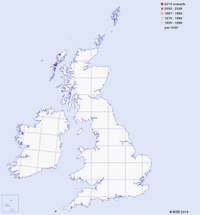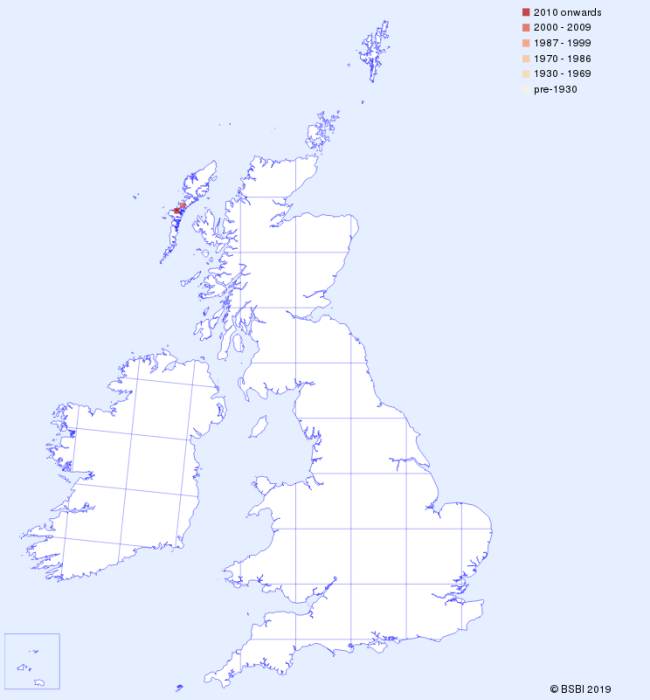Classified as Vulnerable, the Hebridean Orchid is one of just four orchid species that are endemic to the British Isles. This species grows only in the Machair - sea meadows - on the north coast of North Uist, in the Outer Hebrides. Because its range is so limited, the Hebridean Orchid is relatively easy to identify: it is a small, squat plant with relatively large, dark-magenta flowers and heavily marked with large dark blotches. Dactylorhiza ebudensis flowers between late May and late June.
| Distribution Map |
Key Features |
 |
Records for the Hebridean Orchid from BSBI are shown on the map with most recent in front. (Hover the mouse over the small map to expand it.)
CLICK HERE to visit the BSBI website page for updated data and
maps with separated data for individual record periods.
|
Plant: 5 to 18cm tall; stem hollow, green, darkly flushed deep purple towards the tip.
Leaves: up to 4 keeled and lanceolate leaves towards the base of the stem, green and heavily marked (sometimes completely suffused) with dark brown to purple blotches; held almost horizontally. There is a single non-sheathing leaf higher up the stem which is also sometimes completely purple. The leaves sometimes have marking on the underside of the stem as well as on the upper surface.
Bracts: green, washed dark purple or sometimes purple throughout.
Flowers: 5 to 20 relatively large, deep-magenta flowers. The upper sepal and petals form a hood above the lip. The lateral sepals are elliptical and held at an angle above horizontal. The lip, which is distinctly three-lobed, is broader than it is long; it is flat, white towards the base and heavily marked with dots, dashes and loops which, due to the darkness of the background colour, are sometimes difficult to discern. |
Image Gallery for Hebridean Orchid Dactylorhiza ebudensis
| Pollination |
Taxonomy & Hybrids |
No specific information is available. |
The specific name ebudensis means 'Hebridean Islands'.
Subspecies: none.
Varieties: a hyperchromatic variant is occasionally found.
Hybrids: Where the two species occur together, there may be a hybrid with the Northern Marsh-orchid Dactylorhiza purpurella. |
Articles about Hebridean Orchid in JHOS

